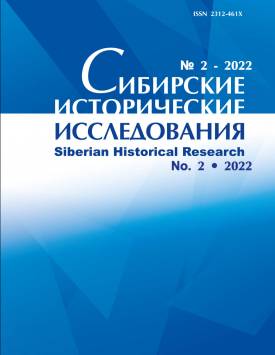Cyborg Body: Humans in Theories of Extended Organisms
Patio-temporal parameters of cyborg bodies serve as a reference frame for the discussion of the problems of body boundaries, the definition of the concept of a biological individual or biological organism, and the organism’s interrelations with immediate milieu that have given rise to the concept of ‘extended organism’. A tentative typology of hybrid or synthetic forms, uniting individual bodies with their (techno-) environment is provided, including several forms of body techniques and routine practices (skills and habits), as well as various types of prosthetic relations (extensions and incorporations) that form cyborg bodies. The history of the idea of ‘externalization’ of human organs and their functions, based on the works of Maine de Biran, Marcel Mauss, Ernst Kapp, Siegmund Freud, William James, John Dewey, Andre Leroi-Gourhan, Anri Bergson, Felix Ravaisson, and Talcott Parsons, is traced. Donna Haraway’s concept of ‘partial connections’ that has been subsequently elaborated by Marylin Strathern is used to catch the particular characteristics of cyborg bodies that unite the elements of different provenance. In conclusion, the author discusses some ethical issues of human enhancement. The author declares no conflicts of interests.
Keywords
partial connections,
habit,
incorporation,
extension,
extended organism,
biological individual,
cyborgAuthors
| Sokolovskiy Sergey V. | Institute of Ethnology and Anthropology, Russian Academy of Sciences | sokolovskiserg@gmail.com |
Всего: 1
References
Wilson J.W. Biological Individuality: The Identity and Persistence of Living Entities. Cambridge: Cambridge University Press, 1999
Uexkull J. von [1909] Umwelt und Innenwelt der Tiere. 2-te Aufgabe. Berlin: Springer Verlag, 1921
Turner J.S. The Extended Organism: The Physiology of Animal-Built Structures. Cambridge, Mass.: Harvard University Press, 2000
Strathern M. [1991] Partial Connections. Walnut Creek: Altamira press, 2004
Schmitz H. Der Leib. Berlin: De Gruyter, 2011
Sender R., Fuchs S., Milo R. Revised estimates for the number of human and bacteria cells in the body // PLoS Biology. 2016. Vol. 14, № 8. e1002533
Reuleaux F. Kinematics of Machinery: Outlines of a Theory of Machines. London: Macmillan, 1876
Santelices B. How many kinds of individual are there? // Trends in Ecology and Evolution. 1999. Vol. 14, № 4. P. 152-155
Muri A. The Enlightenment cyborg: a history of communications and control in the human machine, 1660-1830. Toronto: University of Toronto Press, 2007
Pepper J., Herron M. Does Biology Need an Organism Concept? // Biological Reviews. 2008. Vol. 83, № 4. P. 621-627
Muller S. Distributed corporeality: Anatomy, knowledge and the technological reconfiguration of bodies in ballet // Social Studies of Science. OnlineFirst. 2018. P. 1-22
Mol A. Body Multiple: Ontology in Medical Practice. Durham (N.C.): Duke University press, 2002
McLuhan M. The Gutenberg Galaxy. Toronto: University of Toronto Press, 1962
Lakoff G., Johnson M. Metaphors We Live by. Chicago: The University of Chicago Press, 1989
Malabou C. Addiction and Grace: Preface to Felix Ravaisson’s Of Habit // Ravaisson F. Of Habit / transl. by C. Carlisle, M. Sinclair. London: Continuum Books, 2008
Kapp E. Grundlinien einer Philosophie der Technik. Zur Entstehungsgeschichte der Kultur aus neuen Gesichtspunkten. Braunschweig: George Westermann, 1877
Huneman Ph., Wolfe Ch. The Concept of Organism: Historical, Philosophical, Scientific Perspectives.Introduction // History and Philosophy of the Life Sciences. 2010. Vol. 32, № 2/3. P. 147-154
Johnson M. Embodied Mind, Meaning and Reason: How Our Bodies Give Rise to Understanding. Chicago: University of Chicago press, 2017
Hall E.T. The Silent Language. Garden City, NY: Doubleday, 1959
Haraway D. [1985] Cyborg Manifesto // Simians, Cyborgs and Women: The Reinvention of Nature. New York: Routledge, 1991
Goodacre R. Metabolomics of a superorganism // Journal of Nutrition. 2007. № 137 (1 Suppl.). P. 259S-266S
Gradmann H. Die harmonische Lebenseinheit vom Standpunkt exakter Naturwissenschaft // Die Naturwissenschafte. 1930. Bd. 18, Hf. 28-29. S. 641-644, 662-666
Fuller R.B. [1935] Nine Chains to the Moon. Carbondale, Ill: Southern Illinois Univ. press, 1938
Dolezal L. The Remote Body: The Phenomenology of Telepresence and Re-Embodiment // Human Technology. 2009. Vol. 5, № 2. P. 208-226
Freud S. [1930] Das Unbehagen in der Kultur // Freud S. Werkausgabe in zwei Banden. Bd. 2: Anwendungen der Psychoanalyse. Frankfurt am Main: Fischer Taschenbuch Verlag, 2006
Clark A., Chalmers D. The extended mind // Analysis. 1998. Vol. 58, № 1. P. 7-19
Clynes M.E., Kline N.S. Cyborgs and space // Astronautics. Sept. 1960. P. 26-27, 74-77
Dewey J. Human Nature and Conduct. New York: Holt, 1922
Clark A. Natural-born cyborgs: Minds, technologies, and the future of human intelligence. Oxford: Oxford University press, 2003
Blackman L. Immaterial Bodies: Affect, Embodiment, Mediation. London: Sage, 2012
Bateson G. [1972] Steps to Ecology of Mind. L.: Jason Aronson Inc., 1987
Шмальгаузен И.И. [1938] Организм как целое в индивидуальном и историческом развитии. М.: Наука, 1982
Мортон М. Гиперобъекты: Философия и экология после конца мира. Пермь: Hyle press, 2019
Флек Л. [1935] Возникновение и развитие научного факта: введение в теорию стиля мышления и мыслительного коллектива. М.: Дом интеллектуальной книги, 1999
Соколовский С.В. Экстенсии как техно-соматические сборки: к истории одной идеи // Corpus Mundi. 2020. № 1. С. 15-35
Кожевникова М. Запертые в бестелесности: робот Гордон и мозговые органоиды // Этнографическое обозрение. 2018. № 6. С. 5-36

